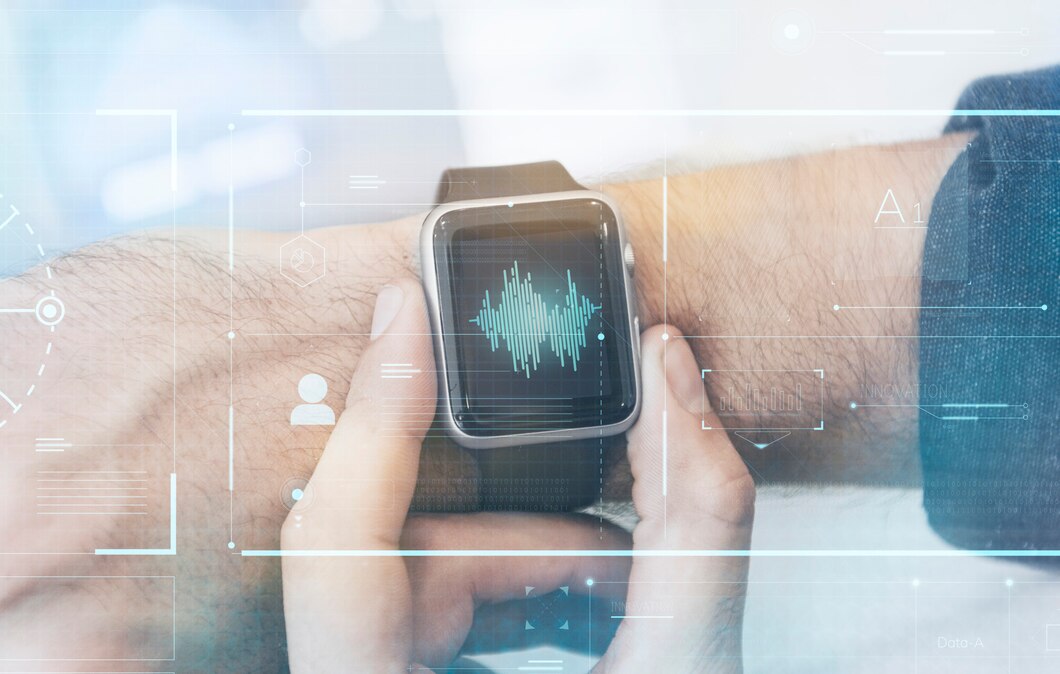Initially designed for health and fitness tracking, today’s wearables have expanded into various industries, including fashion, entertainment, and personal productivity. As these technologies evolve, they are becoming integral parts of our daily lives, blending functionality with style and offering a wide range of capabilities.
The Early Days: Wearables for Health and Fitness
Wearable technology began to gain mainstream attention with devices such as fitness trackers and smartwatches. These early devices, like the Fitbit or early versions of the Apple Watch, focused on monitoring basic health metrics like steps taken, calories burned, and heart rate. Their appeal lay in the simplicity of tracking personal health data and encouraging healthier habits.
Fitness enthusiasts and health-conscious consumers embraced these wearables because they provided real-time feedback on physical activity and supported goal-setting for improved health outcomes. This health-focused era of wearables was the foundation for what was to come, demonstrating how technology could seamlessly integrate with personal well-being.
The Shift Toward Smartwatches: Expanding Functionality
As technology advanced, wearables became more sophisticated, transitioning from simple fitness trackers to multifunctional devices. The rise of the smartwatch marked this shift, with companies like Apple, Samsung, and Garmin incorporating more than just health monitoring into their devices. Smartwatches began to offer features like text notifications, music control, voice assistance, and even mobile payments.
These new features expanded the appeal of wearables beyond fitness and health. Smartwatches became essential tools for managing everyday tasks, bridging the gap between smartphones and personal accessories. Their sleek designs and customizable watch faces also began to blur the lines between technology and fashion, appealing to a broader range of users.
Wearables in Fashion: A New Frontier
In recent years, wearable technology has increasingly moved into the fashion industry. The focus is no longer solely on functionality but also on aesthetics. Fashion brands have begun partnering with tech companies to create devices that are not only high-tech but also stylish and on-trend.
For example, luxury watchmakers like TAG Heuer and Louis Vuitton have launched high-end smartwatches that combine cutting-edge technology with the craftsmanship and style of traditional timepieces. Similarly, collaborations between fitness tracker brands and fashion houses have led to more fashionable fitness devices, allowing users to stay connected while making a style statement.
Wearable fashion has also evolved beyond watches. Smart jewelry, smart clothing, and even smart glasses are pushing the boundaries of how we interact with technology. Designers are integrating sensors into fabrics to monitor health, improve athletic performance, or even change the color of clothing based on mood or environment. Fashionable wearables are not just accessories; they are becoming an extension of personal identity.
Health 2.0: Advanced Wearables for Medical Monitoring
As wearable technology continues to evolve, its applications in the health sector are expanding significantly. Modern wearables are now being used to monitor more complex health conditions. For instance, continuous glucose monitors for diabetics, sleep trackers for those with insomnia, and ECG monitoring features on smartwatches are revolutionizing patient care.
This new generation of wearables can detect abnormalities in real time, alerting users and healthcare providers to potential health issues before they become serious. Remote health monitoring has gained significant traction, especially during the COVID-19 pandemic, where wearables allowed patients to track their vital signs from home.
Wearables are not only improving personal health management but also transforming the medical field by enabling early diagnosis, ongoing care, and telemedicine services. As artificial intelligence and machine learning become more integrated with wearable technology, the potential for predictive health analytics will further improve patient outcomes.
The Future: Where Health, Fashion, and Tech Converge
Looking ahead, the future of wearable technology is exciting. As devices become more advanced, they will likely become even more ingrained in both daily life and fashion. Innovations such as smart textiles, augmented reality (AR) wearables, and brain-computer interfaces (BCIs) may redefine the boundaries of wearable tech.
Smart textiles, for instance, could integrate complex technology directly into fabrics, allowing clothing to adjust temperature, charge devices, or monitor health without the need for separate gadgets. AR wearables, like smart glasses, are already on the horizon, promising to enhance how we interact with both the digital and physical worlds. BCIs could take wearables to a whole new level by enabling users to control devices using their thoughts.
In the fashion industry, wearables may become even more personalized, allowing for greater customization and design flexibility. The merging of fashion and technology will continue to push creative boundaries, with designers leveraging digital elements to create pieces that respond to the wearer's emotions, movements, or surroundings.
